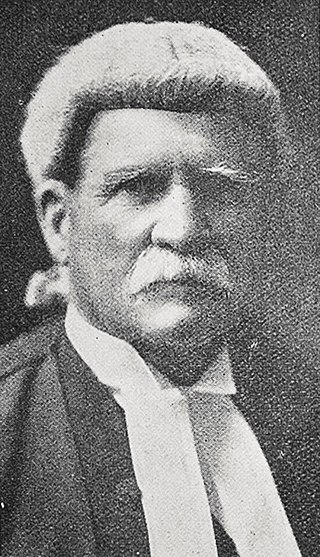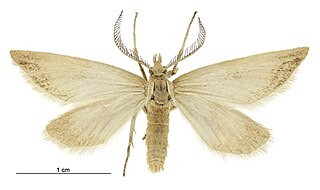
Chlorociboria is the type genus of in the fungal family Chlorociboriaceae within order Helotiales. The genus includes 23 species.

Chlorociboria aeruginascens is a saprobic species of mushroom, commonly known as the blue stain, green elfcup or the green wood cup because of its characteristic small, green, saucer-shaped fruit bodies. Although the actual fruit bodies are infrequently seen, the green staining of wood caused by the fungus is more prevalent.

Sir Frederick Revans Chapman was a New Zealand judge and was the first New Zealand-born Supreme Court judge.
Pseudaneitea campbellensis is a species of air-breathing land slug, a terrestrial gastropod mollusc in the family Athoracophoridae, the leaf-veined slugs.

Pseudaneitea is a genus of air-breathing land slugs, terrestrial gastropod molluscs in the family Athoracophoridae, the leaf-veined slugs.
Chlorociboria albohymenia is a species of fungus in the family Chlorociboriaceae. It is found in New Zealand.
Chlorociboria awakinoana is a species of fungus in the family Chlorociboriaceae. It is found in New Zealand.
Chlorociboria clavula is a species of fungus in the family Chlorociboriaceae. It is found in New Zealand.
Chlorociboria colubrosa is a species of fungus in the family Chlorociboriaceae. It is found in New Zealand.
Chlorociboria duriligna is a species of fungus in the family Chlorociboriaceae. It lives in New Zealand.
Chlorociboria halonata is a species of fungus in the family Chlorociboriaceae. It is found in New Zealand.
Chlorociboria macrospora is a species of fungus in the family Chlorociboriaceae. It is found in New Zealand.
Chlorociboria pardalota is a species of fungus in the family Chlorociboriaceae. It is found in New Zealand.
Chlorociboria poutoensis is a species of fungus in the family Chlorociboriaceae. It is found in New Zealand.
Chlorociboria procera is a species of fungus in the family Chlorociboriaceae. It is found in New Zealand.
Chlorociboria spathulata is a species of fungus in the family Chlorociboriaceae. It is found in New Zealand. It is a species of green algae that is commonly found on dead and decaying wood. It is sometimes referred to as "green stain fungi" because of the green pigment it produces, which can stain wood a distinctive shade of green. The species is often used as a model organism in studies of wood decay and wood-rotting fungi.
Chlorociboria spiralis is a species of fungus in the family Chlorociboriaceae. It is found in New Zealand.

Asaphodes campbellensis is a species of moth in the family Geometridae. It is endemic to Campbell Island in New Zealand.
Protopannaria campbellensis is a rare species of lichen in the family Pannariaceae. It is found in the southern New Zealand shelf islands. It is unique due to its specific structure and lack of lichen products, which are typically found in related species. The lichen is found in wet grasslands and upland peat bogs.

Cryptopygus campbellensis is a species of springtail belonging to the family Isotomidae. The species was first described by Keith Arthur John Wise in 1964. The species is native to Campbell Island in the New Zealand Subantarctic Islands.





